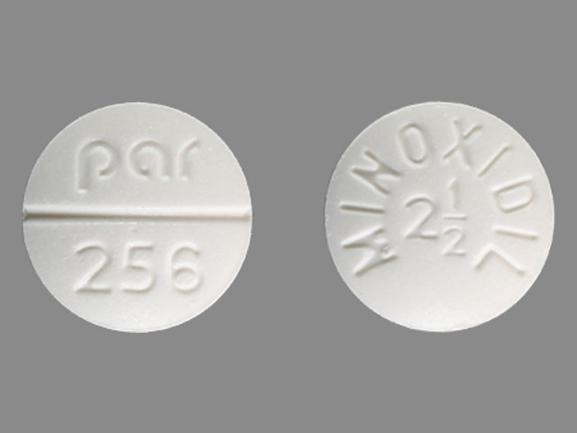Minoxidil Disease Interactions
There are 4 disease interactions with minoxidil.
Minoxidil (applies to minoxidil) fluid retention/congestive heart failure
Major Potential Hazard, Moderate plausibility. Applicable conditions: Pericardial Tamponade
Minoxidil tablets must usually be administered with a diuretic to prevent fluid retention and possible congestive heart failure; a high ceiling (loop) diuretic is almost always required. Body weight should be monitored closely. If minoxidil is used without a diuretic, retention of salt and corresponding volumes of water can occur within a few days, leading to increased plasma and interstitial fluid volume and local or generalized edema. Caution and close monitoring is advised in patients with preexisting congestive heart failure. Pericardial effusion, occasionally with tamponade, has been also observed in about 3% of treated patients not on dialysis, especially those with inadequate or compromised renal function. In some cases, the pericardial effusion was associated with a congestive heart failure, or marked fluid retention. Rarely, refractory fluid retention may require discontinuation of minoxidil. Provided that the patient is under close medical supervision, it may be possible to resolve refractory salt retention by discontinuing minoxidil for 1 or 2 days and then resuming treatment in conjunction with vigorous diuretic therapy.
Minoxidil (applies to minoxidil) ischemic heart disease
Major Potential Hazard, High plausibility.
Minoxidil commonly produces reflex tachycardia. Angina pectoris may develop or worsen as a result of increased oxygen demands associated with increased heart rate and cardiac output. Therapy with minoxidil should be administered cautiously in patients with coronary insufficiency. The concomitant administration of a beta-adrenergic blocker is often helpful to prevent tachycardia and increased myocardial workload. Minoxidil has not been studied for use in patients who have had a recent myocardial infarction (within the preceding month). It is possible that the reduction of arterial pressure and increase in heart rate produced by minoxidil may further limit blood flow to the myocardium. Minoxidil must be administered under close supervision, also usually given with a diuretic, to prevent serious fluid accumulation. Patients with malignant hypertension and those already receiving guanethidine should be hospitalized when minoxidil is first administered so that they can be monitored to avoid too rapid, or large orthostatic, decreases in blood pressure.
Minoxidil (applies to minoxidil) pheochromocytoma
Major Potential Hazard, High plausibility.
The use of minoxidil is contraindicated in patients with known or suspected pheochromocytoma. Minoxidil may stimulate the secretion of catecholamines from the tumor through its antihypertensive action.
Minoxidil (applies to minoxidil) renal failure/dialysis
Moderate Potential Hazard, High plausibility. Applicable conditions: Renal Dysfunction
Patients with renal failure or on dialysis may require a lower dosage of minoxidil as 21% of a dose is excreted unchanged in the urine. Close medical supervision is advised to prevent exacerbation of renal failure or precipitation of cardiac failure.
Switch to professional interaction data
Minoxidil drug interactions
There are 186 drug interactions with minoxidil.
Minoxidil alcohol/food interactions
There is 1 alcohol/food interaction with minoxidil.
More about minoxidil
- minoxidil consumer information
- Check interactions
- Compare alternatives
- Pricing & coupons
- Reviews (10)
- Drug images
- Side effects
- Dosage information
- During pregnancy
- Support group
- Drug class: vasodilators
- Breastfeeding
- En español
Related treatment guides
Drug Interaction Classification
| Highly clinically significant. Avoid combinations; the risk of the interaction outweighs the benefit. | |
| Moderately clinically significant. Usually avoid combinations; use it only under special circumstances. | |
| Minimally clinically significant. Minimize risk; assess risk and consider an alternative drug, take steps to circumvent the interaction risk and/or institute a monitoring plan. | |
| No interaction information available. |
See also:
Further information
Always consult your healthcare provider to ensure the information displayed on this page applies to your personal circumstances.


